You may recall that I kind of like boudinage. So it piqued my interest when our field trip leaders (on the pre-GSA Minneapolis trip to examine the structural geology of the sub-province boundaries in the Superior Craton) said our next stop was to visit “pseudoboudins,” segments of granitoid pegmatites that looked like boudins but probably represented a totally different process. Here’s the idea:
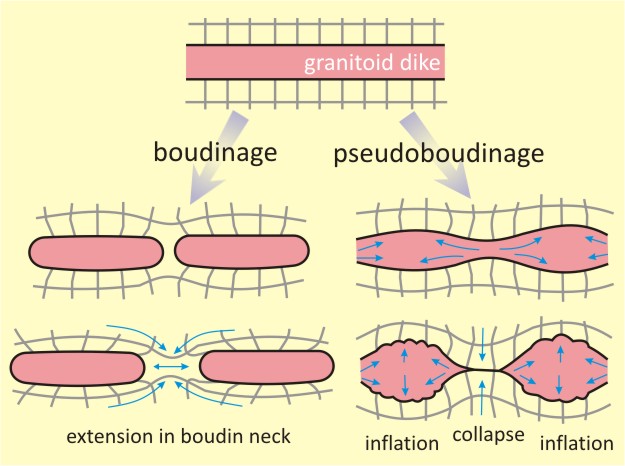
With regular old boudinage, the solidification of the pegmatite takes place first, after which it is the more competent layer, relative to the schist host rock it cuts across. Stretching it causes it to break into segments which move apart. The schist flows into the gaps (boudin “necks”) between the boudins. With pseudoboudinage, on the other hand, extension (opening the dike) is followed by collapse of that same mushy structure. The magma flows out of the way on parts that pinch shut, which neighboring zones inflate. Then it crystallizes.
Our field trip leaders suggested that the two may be distinguished on the following bases : (1) true boudins have clearly defined edges, typically at a high angle to host rock foliation, and (2) true boudins display clear foliation deflection into the boudin neck regions. Pseudoboudin trains are typically oriented at a low angle to host rock foliation. The individual pseudoboudins show irregular “cauliflower” shapes. The large amount of extension required to make the pseudoboudins by regular boudinage is incompatible with strain measurements determined from nearby boudins. To complicate things further, original pseudoboudins may subsequently be separated by layer-parallel separation of the “psegments”. In such a case, the pseudobodins are “primary” structures, and the subsequent separation (half of what makes boudinage “boudinage”) is a secondary or tectonic overprint.
Take a look:
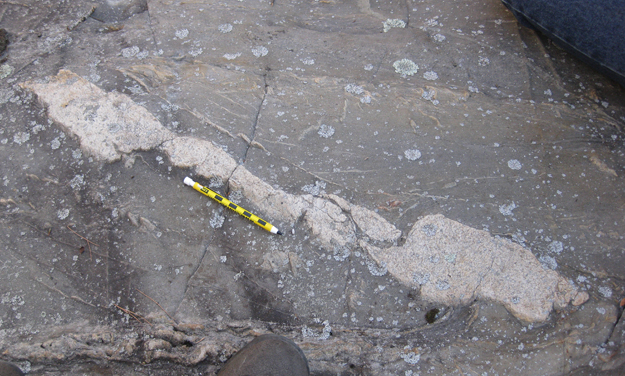
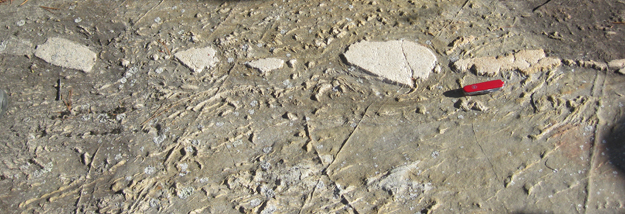
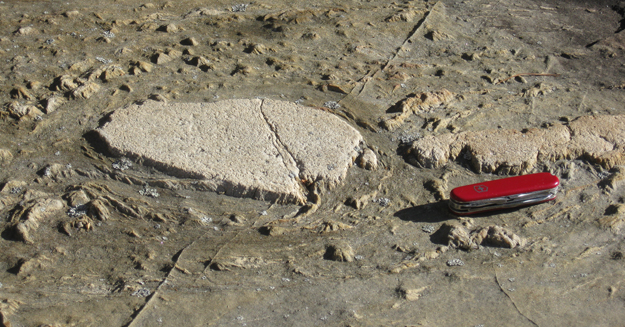
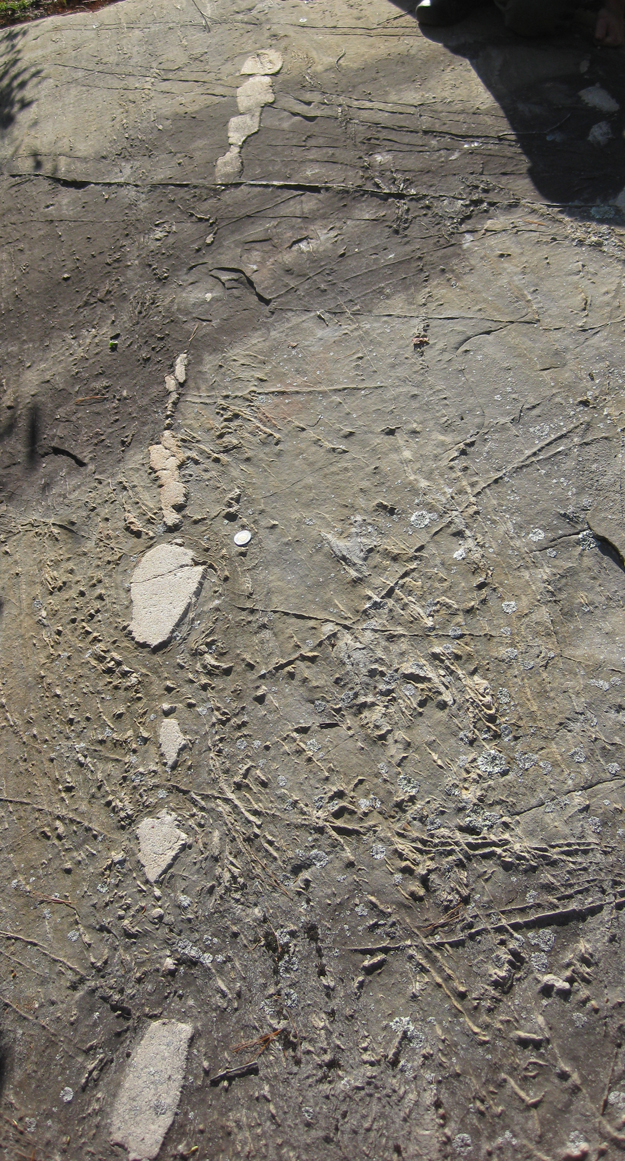
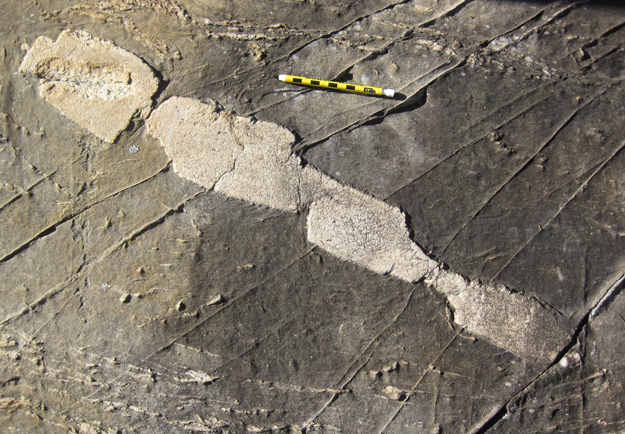
Nice differential weathering highlights the edges of these structures. One other vital characteristic that I sketched in my field notebook was the potential presence of vein material in the pressure shadow immediately adjacent to true boudins (highlighted in orange in this scan):
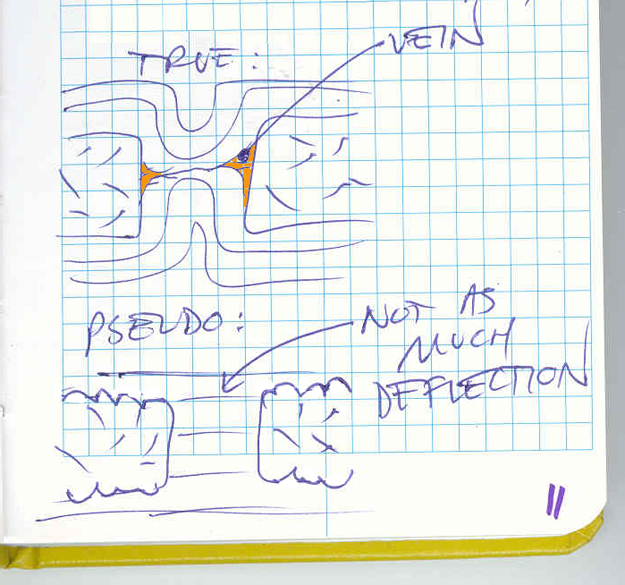
I’m not sure that I totally “got” how these particular examples were prime exemplars of pseudoboudinage, but I definitely got the concept – and it was a new one for me. Until we got to this outcrop, I had never considered pseudoboudinage before. Now the concept is part of the paradigm in my head – as I meet new examples of boudinage throughout my career, I can now evaluate whether they might be pseudoboudinage instead. That’s a useful tool in one’s mental toolbox. If I get one new idea per day of a field trip like this, then I consider it worth my while (and expense) to participate in trips like the Superior Craton excursion.

There must be some type of food that demonstrates pseudoboudinage (boudinage = “sausageization”), so we can have a new and more tidy geologic term for the big glossary.